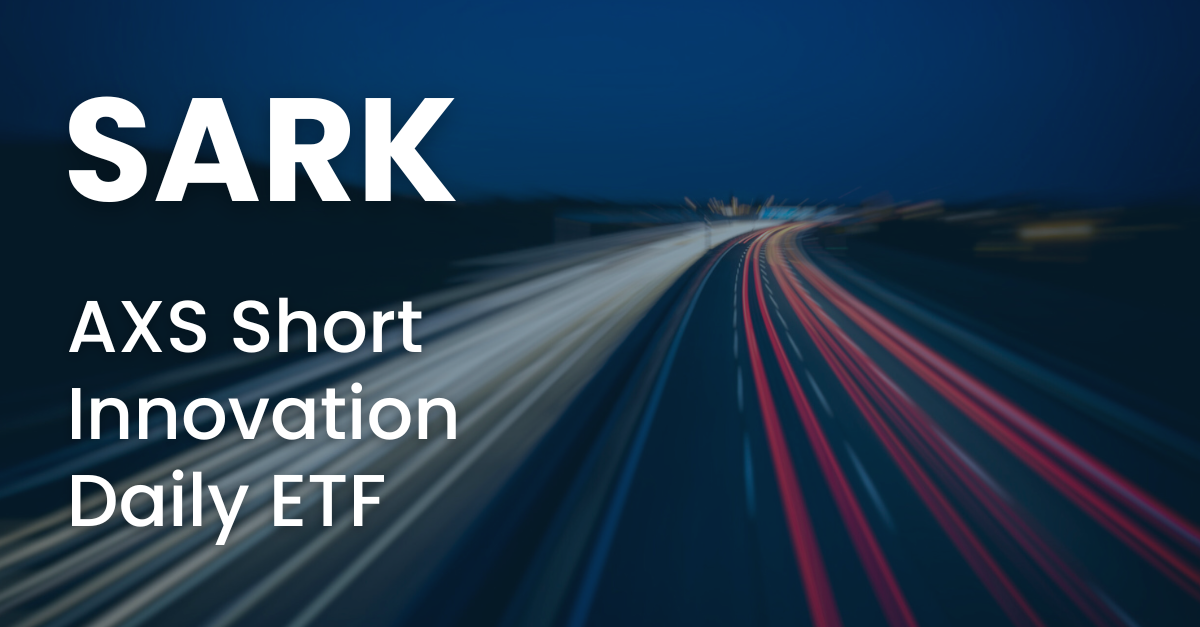Short Disruptive Innovation with SARK.
An inverse ETF for investors looking to trade a downturn in a leading actively managed innovation ETF.

Recent Performance for SARK & TARK Inverse ETFs
Source: UMB Financial Corporation. Represents the cumulative return based on closing NAVs for the last five trading days excluding weekends and market holidays. The performance quoted represents past performance and does not guarantee future results. For standardized performance, see SARK Performance or TARK Performance. Investment return and principal value of an investment will fluctuate so that an investor's shares, when sold or redeemed, may be worth more or less than the original cost. Current performance may be lower or higher than the performance quoted.
SARK has a 0.75% management fee and a gross/net expense ratio of 1.06%/0.75%. The Advisor has contractually agreed to waive its fees and/or pay for operating expenses of the Fund to ensure that total annual fund operating expenses will not exceed 0.75%, effective for a two-year period following the date of the Reorganization on August 8, 2022. TARK has a 0.95% management fee and a gross/net expense ratio of 1.35%/1.15%. The Advisor has contractually agreed to waive its fees and/or pay for operating expenses of the Fund to ensure that total annual fund operating expenses will not exceed 1.15%, effective until July 31, 2024.
Not for everyone.
The significant risks of leveraged and/or inverse ETFs include the risks of leverage, derivatives, and/or other complex investment strategies that they employ. These investments are designed for short-term or intraday trading for investors seeking daily leveraged investment results. Investors in the fund should: (a) understand the risks associated with the use of leverage; (b) understand the consequences of seeking daily leveraged investment results; (c) intend to actively monitor and manage their investment. Fund performance will likely be significantly different than the benchmark over periods longer than one day and the performance may trend in the opposite direction than their benchmark over periods other than one day.
The Funds seek daily leveraged investment results and are intended to be used as short-term trading vehicles. The Funds pursue daily leveraged investment objectives, which means they are riskier than alternatives that do not use leverage because the Funds magnify the performance of their underlying security. The volatility of the underlying security may affect a Fund’s return as much as, or more than, the return of the underlying security.
You may be asking...
SARK
How does SARK fit into a contrarian trading strategy?
SARK can be a tactical component in a diversified trading strategy, offering a way to potentially benefit from downturns in the performance of ARK Innovation ETF (NYSE Arca: ARKK).
Is SARK suitable for long-term investing?
Given its inverse daily investment objective, SARK is primarily designed for short-term trading, and may not be suitable for longer holding periods.
What are the uses of SARK?
At times, you may want to take a bearish position on disruptive innovation because you may perceive the theme to be overvalued, overbought or overhyped, or the portfolio is overly concentrated in a strategy whose holdings teeter on the brink of profitability, or you’re looking to hedge your existing allocation to the underlying ETF.
Can SARK be used for hedging?
Yes, SARK can be an effective tool for investors looking to hedge against downward movements in innovation stocks and indices.
How much does SARK cost?
TARK has a 0.95% management fee and a gross/net expense ratio of 1.35%/1.15%.



